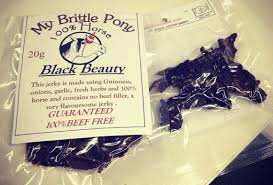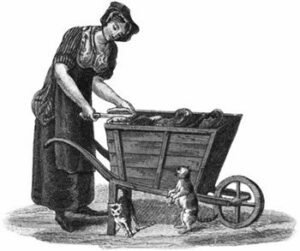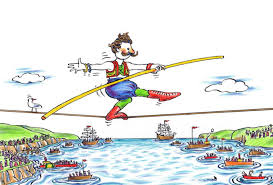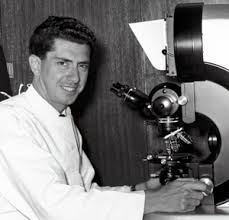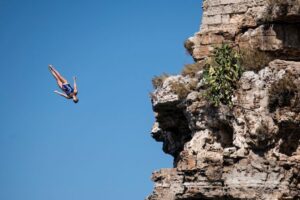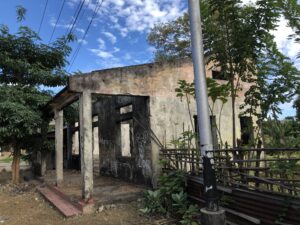When I wrote about Sweden in my blog on 27 March, Australia was paralleling Sweden in numbers of COVID-19 cases – well sort of.
2,016 people have been reported infected with COVID-19 in Sweden (20 cases per 100,000 inhabitants). Nationally, 25 of the cases have died.
Australia had 3,047 cases with 14 deaths at the time (12 cases per 100,000 inhabitants). Of that total then, 300 infected were attributed to the Ruby Princess circus.
Reviewing the figures as of 20 May, the current Swedish figures are 31,523 cases (315 per 100,000 population and projected to be the highest per capita death rate in the world) with 3,831 deaths and 4,971 recovering. Australia by contrast has 7,081 (29 per 100,000 inhabitants) with 100 deaths.
My friend who is a senior radiologist, who once ran the department at the Karolinska Institute in Stockholm, has written to me last week (sic):
… In Sweden a large proportion of elderly who died from COVID-19 were not only old but in special care facilities …
Our experts seem to view yours and New Zealand’s very successful containment effort with scepticism, thinking that in the end, spreading is inevitable. However, the alternative that we are experiencing with many dead elderly is really also very painful indeed. Hopefully you will be better prepared when (if) the virus spreads again. We have had to put much of ordinary health care on hold and reports are that many who should seek care are not, ie transient ischaemic attacks (TIA,) coronary disease patients, symptomatic cancers.
The much increased ICU capacity, fourfold increase, takes a toll on all other activity.
… Life is not as normal as reported in international media, all shows and theatres are cancelled, very few travel by Metro compared to normal. Largely the restaurants are complying with rules of sparsely seated customers, with no waiting lines… However many are enjoying the outdoors and our small wood next door sees many visitors, keeping prescribed distances…
We are hoping for restrictions to ease so that we can at least visit Öland.

Öland is an island four hours drive from Stockholm connected by a bridge across the Kalmar Sound and we had hoped to spend some part of the Northern summer there. Not now unfortunately.
My friend continued:
I have worked for some time, and noted the high proportion of pulmonary emboli in our COVID patients, as well as other interesting things with this baffling infection. Rashes, COVID toes, white lungs (usually associated with widespread asbestosis – Ed), cerebral complications, abdominal symptoms. The list is endless.”
My friend mentioned a smorgasbord of diseases arising from COVID-19. This infection is neither the flu nor just a bad cold. And my friend does not even mention Kawasaki disease; there is much more in the COVID-19 malignant store to sample.
His comments were backed up in a report in the NY Times (May 16).
In essence, the report agreed that the Swedish mortality was very high among the elderly but unlike Italy where there was a high concentration of multi-generational families, Sweden lives in a far less cramped space with many more single person households.
The average Swede has less diabetes, obesity and heart disease than in the other countries with a high infection rate.
Even so the Swedish economy has not emerged unscathed –and a contraction of the GDP by seven to ten per cent is predicted by the Central Bank.
Therefore, for those idiot Australian Borises who want to open Australia tomorrow, think Sweden – and not as an Ikea panacea.
Thank God for our senior health people who said don’t go to see the “Sharkies” and hug each of the players in turn, but shut down Australia.
Sweden provides a salutary lesson as Australia re-opens its leisure activities.
Non dimentica
When you author a blog, you open yourself up to being wrong publicly. So I trawled back through my blogs to see when I first mentioned the coronavirus. It was late February, and at that time I was somewhat Thomasine, because a large group of our nationals had been airlifted back to Australia from Wuhan. None of them had tested positive before or after the quarantine.
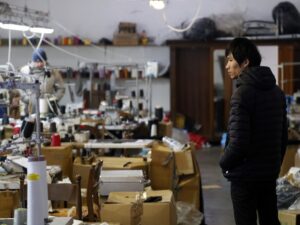 Yet there was something I was unaware of at the time I wrote the piece and that was how many Chinese were working in sweatshops in Northern Italy. The Chicago Tribune as far back as 2009 reported … an estimated 30,000 Chinese are legal immigrants in this city (Prato) of 180,000. Another 30,000 illegal immigrants are also suspected to live here. Many among the Chinese work in small hidden factories for as long as 14 hours a day.
Yet there was something I was unaware of at the time I wrote the piece and that was how many Chinese were working in sweatshops in Northern Italy. The Chicago Tribune as far back as 2009 reported … an estimated 30,000 Chinese are legal immigrants in this city (Prato) of 180,000. Another 30,000 illegal immigrants are also suspected to live here. Many among the Chinese work in small hidden factories for as long as 14 hours a day.
One of our informants recently confirmed that there have been regular flights from Wuhan to Milan, with up to 100,000 Chinese“guest workers”. making shoes there. Once out of the wild meat market, the virus thus had a saloon passage to the delights of Lombardy and Emilio-Romagna. There here were the crowded conditions both at work and domestically to spread the virus.
Despite there being no positive cases among the Wuhan evacuees, Australia had closed its borders to China and then selectively to other countries – but not to the United States, which we should have.
Yes, I was skeptical – and the question remains in my mind why were there no positive cases detected in the people being flown out of Wuhan. If there were none, what was the major reason? I know, the plane air conditioning had been bolstered – what else? Social distancing? Masks? Hand washing? Repeated cleaning of the airplane toilets and no moving from the one seat unless going to the toilet? In the end no-one was infected – in 400 people out of Wuhan.
As for what I wrote, I think I overused the word “hysterical”, which I now regret.
Abiden with me, fast falls the eventide …
… the New Yorker’s Adam Gopnik decided that this was the night that changed everything. “Not only, as we did not know then, was President Obama in the midst of the operation that would lead shortly to Osama bin Laden’s killing,” he wrote last fall, “it was also the night when, despite that preoccupation, the President took apart Donald Trump, plastic piece by orange part, and then refused to put him back together again.” Report in the Washington Post concerning the White House correspondents’ dinner in 2011.
It is about time that the Democratic Party in America prepares for its Peregrine moment. A Peregrine moment? Bob Hawke. The Labor party, which has always been gentle on its leaders up to that time, vanquished Bill Hayden and replaced him with a more formidable challenger to the then Australian Government – Bob Hawke. Not that Bill Hayden was any slouch and certainly in his long-term influence he has been much better than Joseph Robinette Biden Jnr.
In November this year, this man who served 35 years as a senator for Delaware will reach his 78th birthday and he is asking America to elect him to serve a period of time, which will see him leave office at 82 years of age, or perhaps at 86 years.
The most disturbing vision of Biden is his rear view – essentially that of an old doddering man. Then turn him around and there is that ever-engaging smile – as if he has a giant axon inside his skull that is connected to all the facial muscles, which make him smile on cue when somebody rings the metaphorical bell.
Biden is a plagiarist, discovery of which aborted his 1988 Presidential campaign. Plagiarism is a mixture of deceit and intellectual laziness – or underlying dumbness. This flaw resurfaced in certain dealings last year.
As I abhor hugging and extravagant shows of affection (one of the only positive outcomes from this virus), it is unfair to criticise his “touchy-feely” approach, unless it degenerates into the “creepy-gropey”.
Nevertheless, one positive sign that he is a good man is how he has handled grief and he has much to grieve about in his life.
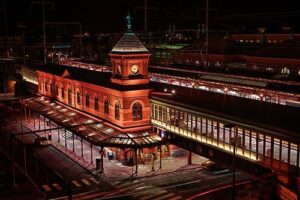
He seems popular, and although I did not see him on the railway platform of Wilmington, that city is an Afro-American with old patrician heritage veneer – it is this cultural gap that Biden has been able to span his whole professional life. After all, he has spent his life in politics with an early daub of lawyer on his escutcheon.
America is in a mess; no matter when the change is made there is a White House reduced to the political nursery of the Baby Trump, and there will need to be someone very focused to clear out the rattles, the dolls, the bucket and spade, and other geegaws fondled and thrown around in the past four years.
I fear Biden just doesn’t have the ability – no fire, only embers. My earlier comments about him have not changed, and my support for Bloomberg would still hold had it not been for this entry of Obama into the frame.
it struck me this week listening to Obama– is perhaps Biden only the shill? A cleverly-concocted shill for Obama. Maybe there is a residual something behind the Delaware smile.
There has not been a contested convention requiring multiple ballots since Eisenhower won the Republican nomination for President in 1952.
Only one President has served two non-consecutive terms – Grover Cleveland, a New York Democrat who was both the 22nd and 24th president.
Yet Obama may be the next to do so. After all, he is only 59 years of age and even another two terms would make him only 67, much younger than either Trump or Biden.
Will there be a contested Democrat convention? I would doubt it if Obama continues to surge. Biden probably may even nominate him.
Obama’s recent entry into the political debate is that of the man of stealth with disarming ruthlessness, just the needed antidote for Trump. Here was a man at a dinner, the master of the lampoon without any sign that at that same moment he was supervising the killing of Osama Bin Laden.
America is in a crisis, in a way that it has not been since the outbreak of the Civil War. Trump just has no sense of national leadership. His genius has been in dividing and ruling a circle of sycophants and chancers in a building on Pennsylvania Avenue and then darting off to rally to and sustain “his apprentices” – a hate-filled armed militia in the event that he does not get elected democratically.
Trump has a pathological fear of Obama – there is something deep in his twisted psyche, which no amount of ranting can exorcise. There is no doubt that if Obama wins and the Democrats get control of both the House of Representatives and the Senate, there would be no more the mister-nice-guy of his first term of 2008. Obama may very well push through an agenda not that much different from the one promoted by Elizabeth Warren. At the same time, he would be the focused commander in chief commissioned to slay the coronavirus by putting America on a war footing. Bringing order to chaos.
Nevertheless, I would speculate that one significant force who would not like to see Obama contest the election is his wife, Michelle. Why? Because as he exposes and humiliates Trump on the election trail with an increasingly unhinged Trump, then with all the fomented madness in America, Obama would be a prime target for assassination. That is the American way.
But as I have said often, what would I know? But then I cried when Kennedy died.
Just a Footnote – talking of Presidents
Once when a young doctor wanted to become a consultant physician, one pathway led to a year in the pathology department doing post mortems. Just as if one was training to be a surgeon, time in the anatomy department was one tried and tested way to that career.
One Friday morning, the Department boss came to me with his mischievous smile and said that he would like me to undertake an interesting task. The person on the slab had been born with Peutz-Jegher syndrome, which is an inherited disease where part of the syndrome involves multiple polyposis in the bowel. These polyps, usually benign, nevertheless could be very distressing and require multiple operative interventions.
In this case, they had been multiple with resultant adhesions all through the abdomen. The question of my boss when the post-mortem had been requested was to see if this particular person had had an undetected cancer in the large bowel.
It is a somewhat ironic situation that whereas I could do up to three postmortems in a morning then, post mortems even in the large hospitals today are rare. However, they are rampant on current television. Admittedly, there is still a swathe of forensic post mortems, and having been someone who was actively involved undertaking post-mortems it is sometimes hilarious to glimpse the portrayal on television.
When I was presented with this body, it was so scrunched up and distorted, it was hard to determine the age, but I do remember that there were remnant spots on his lips and face, which are part of the syndrome. The eyes were open and even after all the post mortems that I had undertaken, I had an immediate sense of pity – even in death the eyes showed the pain.
One of the ways I coped with post mortems was to put on a metaphorical mask for any emotions as I donned my apron and gown over what are now defined as scrubs (but then called boiler suit) and never take a memory of the post mortem away from the department.
Not in this case; I can still see this person in my mind’s eye. Of all the post mortems I have ever done, he did leave an impact, because he was the epitome of misfortune. Why had he been afflicted so – to live for what?
But you cannot have the luxury of thinking much about the meaning of life when you are doing post-mortems.
However, the task at hand was the congealed mass of intestine – seemingly an amorphous matted lump – and I had to open the bowel from duodenum to rectum without losing continuity in my dissection.
How the hell did he survive for so long? It was laborious work to dissect. The body had been stitched up and removed. All my colleagues had finished their post mortems and left. There I was; left on my own to dissect the bowel.
The complication was that I was supposed to be groomsman at a wedding at 6, and as the day progressed, I began looking at the clock. Eventually I finished, sometime around 5 o’clock. I had found no cancerous growth. However, I had finished and I knew I had done a good job.
 I was fortunate that the mortuary attendants were still there and after having a shower, they helped me don my evening dress – white tie and tails which, when you are in a hurry, can be excruciatingly fiddly. An incongruous sight. In a hospital morgue.
I was fortunate that the mortuary attendants were still there and after having a shower, they helped me don my evening dress – white tie and tails which, when you are in a hurry, can be excruciatingly fiddly. An incongruous sight. In a hospital morgue.
Mortuary attendants are a genus of their own – in this case one was a large lump of a man with a funereal voice, who obviously enjoyed the work; the other a smaller man, whom I remember always swore by Cooper’s sheep dip as a great hair restorer. He used it daily. He had a thin wispy comb-over. The two of them were a somewhat quixotic pair.
Dressed, I dashed across the hospital car park and into my car. It was a short drive to the chapel where my friend was being married. I did not have time to see my wife, who on the previous Saturday had given birth to our second son, Marcus. In those days, life post-partum was a more leisurely affair, as Sister Fabian insisted that the mothers needed rest, but of course I could have my evening meal with my wife – just pop across the road after work, doctor.
But tonight was different and when I emerged from the hospital replete in white tie and tails, I remembered it was the day LBJ was coming to town and all the streets around where I was going would be blocked off.
Bugger! However, I was able to take a circuitous route and fortunately found a place to park – at least walking distance from my destination.
I took my umbrella because it was about to rain. There were numerous people along my route down Toorak Road. I really did not notice them as I was walking as fast as I could. I thought of running, but when you are like a stuffed white cockatoo, I thought it unwise.
So concentrated was I that it was not until it hovered directly over me that I looked up and saw the helicopter. Suddenly I felt I was the target. I stopped and waved gingerly. The helicopter crew having seen that it was only a strange young guy in fancy dress with a furled umbrella, rose and left me after a few whirring minutes.
At that moment, the big dark limousine whipped past. There they were – President Johnson with Prime Minister Holt – a brief glimpse of them through a bulletproof window.
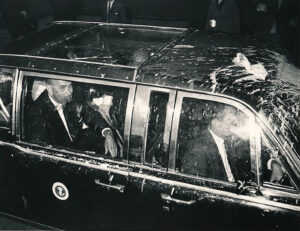
Then they too had gone. I reached the chapel before the bride.
Quite a day.
Can I call you Belford?
Two mildly proptosed eyes peer through a crack in the closet door – then the perfumed polished head emerges looking around and then it is out – darting around the space – a twirling gossamer-haired Titania.
Then satisfied that the stable remains groomed, it retreats into the closet, more a cupboard where this remarkable beast has a number of instruments – the microphone, the megaphone, the semaphore flags, a euphonium, even a full set of drums. Here it changes into a different mode – no longer queen but king. And if we had penetrated the closet there would have been a number of jolly mates, who spent more time in the light, but in this cupboard they prove what religion is without devotees.
Belford, I am truly sorry about your departure. Such an ornament of darkness is irreplaceable because such perfection – a rugby coaching Titania, even if Balmain never benefited from your trail of tauric stardust.
However, away with sarcasm and irony; a lamentable trait which is stimulated by the very thought of you, Belford.
What a disheartening performance, Mr Albanese, your obsequies to Belford. Moreover, you are now the inheritor of the Labour tradition-the traditions of Curtain and Chifley.
What would they have said about this creature, who has said the vilest things about Jacinda Ardern and Julia Gillard? They are women. Belford seems to have a deep hatred of the successful woman – none are allowed into his closet wardrobe, no way.
So why on earth would you, Albanese, join Abbott and Howard (and predictably Morrison) in their obsequies? Do you intend joining them in losing your seat at the next election? I just happen to have a vote in your electorate as does my wife – and our friends. After all, you are not too young to remember that even Belford lost the safe Liberal seat of Eastwood at a by-election, never to be pre-selected again.
I believe that Belford has had a breakfast audience of 17 per cent. Perhaps we can ensure you get the same vote in the next Federal election – perhaps a few more per cent.
The electorate just has to find its Zali Steggall – willing to challenge your antediluvian views – the electorate has a bit of time to find someone, Mr Albanese, someone who can continually provide a reminder for your praise of Belford, the misogynist.
And remember, Mr Albanese, Belford was in all probability shafted by the Melbourne establishment. Your potential nemesis, Mr Albanese, is Victorian. I am unsure but perhaps then you would get more than 17 per cent of the caucus vote once your praise of Belford sinks into your colleagues.
The Sutherland Reds and Campsie Green factional mates of yore may have excused this behavior but they are almost extinct – and your hero, Belford is about to fall off the wall – enclosed in his own green bottle.
And as you may realise, although he was a good unionist and a Sydney boy, Ted Grayndler is buried in Melbourne – admittedly not “by”.
Mouse Whisper
A colleague of my mausmeister, Professor Leeder, has suggested that a uniformed public health service should be created here as in the United States. There is some value in this idea as it would make public health much more easily identifiable as part of the emergency response team. While it has blended in so well at present, being a uniformed service would provide both a discipline and continuity. However like all uniformed services there is always the danger of attracting the characters, who prefer vestments and braid to activity.
Nevertheless, my mausmeister thought that the comment below (as reported by The Economist) of a current Prior of a Camaldoli order was very relevant. This order is a Tuscan offshoot of the Benedictines, who have an excellent tradition of teaching yet within the monastery are encouraged to keep their own company, in prayer and reflection – without loquacity.
“Still, liberalism has its limits. The liturgy, the scripture, the ritual, the tradition, is the container that holds this life together. You start losing that, it’s a free-for-all.”
Think about it. Wise words. It has a relevance in all sorts of way at the current time, not just to public health, or to a putative uniformed service, and also not only to Christianity.
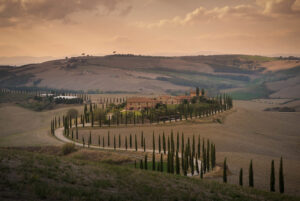


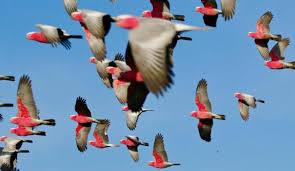

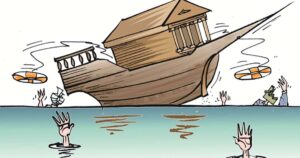
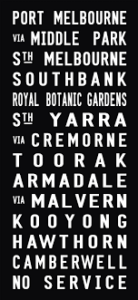
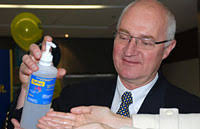
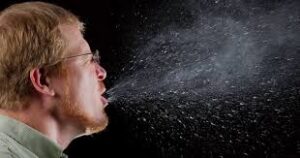

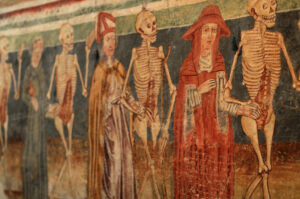
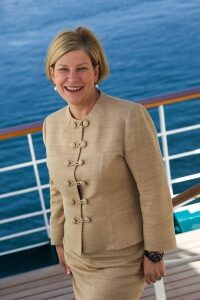
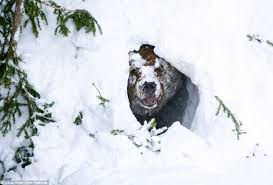





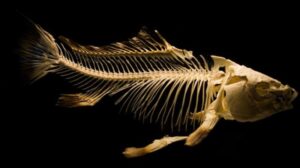
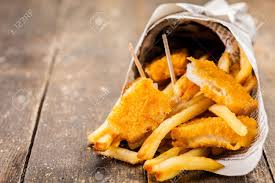


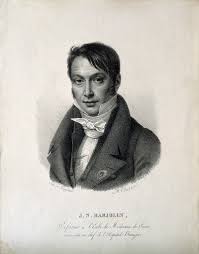
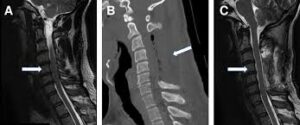
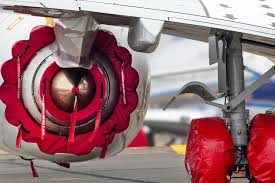
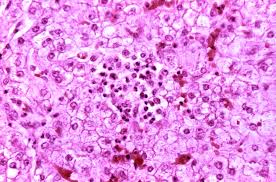

 However, as Dr Abraham had said, having repeated head on collisions at about 50 kilometre per hour cannot be good for the brain irrespective of whether you have a helmet or not (galea as the Romans would call it). Being medical practitioners, he and I are acutely aware of changes in our mental ability; that is until we have lost the ability to be aware.
However, as Dr Abraham had said, having repeated head on collisions at about 50 kilometre per hour cannot be good for the brain irrespective of whether you have a helmet or not (galea as the Romans would call it). Being medical practitioners, he and I are acutely aware of changes in our mental ability; that is until we have lost the ability to be aware.




